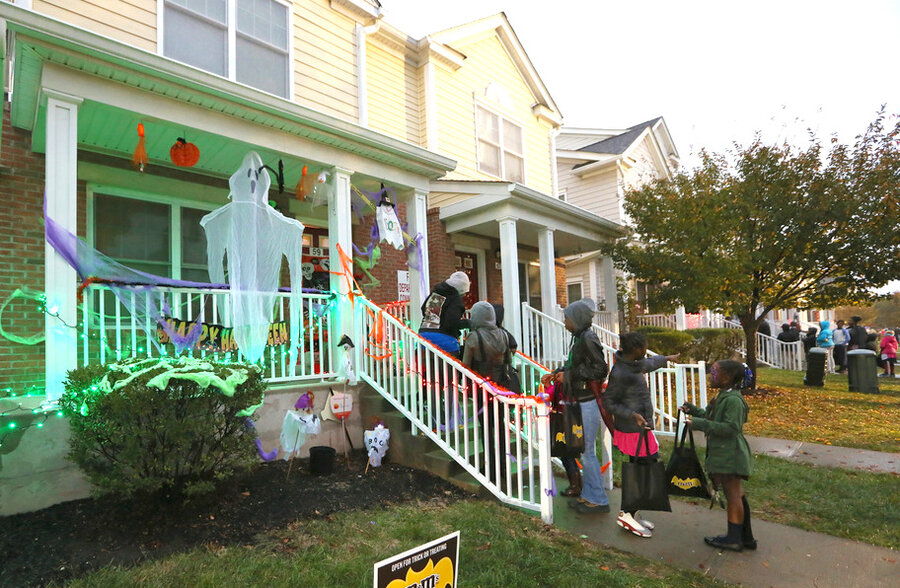Saying, ‘Hello, neighbor’ at Halloween
Loading...
With rising concern over American neighborhoods becoming isolating social deserts, a nonprofit in Savannah, Georgia, has tapped into a holiday that once brought most neighbors together: Halloween. Known as Hello Neighbor SAV, the local group builds off the tradition of parents and their trick-or-treating kids ringing the doorbells of neighbors they may barely know or have never met – and then talking.
In recent years, Hello Neighbor has created all-inclusive events around Halloween, such as costume contests and community art, in hopes that spontaneous chitchat will promote kindness in Savannah. This is an example of many local efforts to prevent further social breakdown and political polarization in the United States, block by block, heart by heart.
The website nextdoor.com, for example, has released an interactive “treat map” to help trick-or-treaters find homes in their neighborhood that are handing out candy. “Spread the Halloween spirit in your community!” states nextdoor.com, which bills itself as the “neighborhood network.” Last year, a group called the New Pluralists invested $10 million in local groups to “learn how healing happens” in diverse communities. The variety of projects “validates our belief that people from all walks of life care about the fates of their neighbors,” says Alison Grubbs.
If the phrase “hello, neighbor” sounds familiar, it is from the late Fred Rogers, whose long-running TV show for young children put kindness into action. A 2018 film about Mister Rogers called “Won’t You Be My Neighbor?” has been one of the top-grossing biographical documentaries. In the film, the real Mr. Rogers says, “Love is at the root of everything. All learning, all relationships. Love, or the lack of it.”
A 2022 survey of 10,000 Americans found that 86% care about their neighbors as much as they care about themselves, while 72% said their neighbors are kind to them. In particular, 94% said they would return a lost item to a neighbor, while 41% said they would adopt the child of a neighbor who passed away.
The survey “shows that kindness is an important part of building better communities,” said Oliver Scott Curry, chief science officer for kindness.org, which conducted the poll.
Nudging neighbors to be neighborly is often overlooked by big organizations. “Most American government bodies, philanthropists, and social entrepreneurs don’t view social breakdown through this neighborhood lens,” writes Seth Kaplan, author of a new book, “Fragile Neighborhoods: Repairing American Society, One Zip Code at a Time.”
Dr. Kaplan, a researcher at Johns Hopkins University who is an expert on fragile states around the world, says America’s local social interactions have become fragile. Neighbors are disconnected from each another. “Beyond the home, we don’t belong to place-based mutual aid societies, ethnic clubs, civic organizations, or religious congregations the way our grandparents did,” he writes.
Keeping a relationship over social media just is not the same as experiencing in-person conviviality. Or the same as checking in on an older neighbor, or holding a block party, or mowing a lawn for someone. For this year’s Halloween, at least in Savannah and many communities, the healing of broken communities begins with knowing who our neighbors are, going door to door, and ringing one doorbell at a time with a kind “hello, neighbor.”





